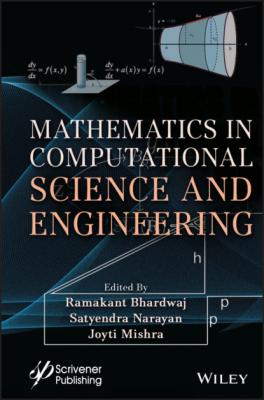Mathematics in Computational Science and Engineering. Группа авторов
Чтение книги онлайн.
Читать онлайн книгу Mathematics in Computational Science and Engineering - Группа авторов страница 21
 is continued until a predefined level of acceptable error or a fixed of number of runs is obtained. Narayan et al. [9] has explained various versions of objective function effectively. Electrical inversion methods may be further differentiated based on the use of data variances in the objective function. For all practical purposes, electrical field data are not uniformly affected by the model properties and therefore, the use of data variances is rarely justified.
is continued until a predefined level of acceptable error or a fixed of number of runs is obtained. Narayan et al. [9] has explained various versions of objective function effectively. Electrical inversion methods may be further differentiated based on the use of data variances in the objective function. For all practical purposes, electrical field data are not uniformly affected by the model properties and therefore, the use of data variances is rarely justified.
Hohmann and Raiche [21] have given a good description and classification of model properties in terms of relevance, non-relevance, or irrelevance. The importance and relevance of model properties can also be described theoretically using eigenvalues and its size. The “singular value decomposition” (SVD) of a matrix has been found useful in the least-squares electrical inversion methods. Tripp et al. [22] have given an excellent overview of this technique in electrical resistivity inversion. It is important to note that the SVD technique needs some special efforts that are computationally demanding and time consuming.
Another computationally attractive technique is described in the electrical resistivity inversion, which uses a “damping factor”. Different criteria are described in the research literature for the selection of “damping factor”. Narayan et al. [9] have given a good account of the various electrical resistivity inversion schemes and methods. The main benefit to use a damping in inversion methods is that it produces a stable solution. Constable et al. [23] have introduced an Occam’s inversion, which is receiving attention in the electrical geophysics. Without knowing magnitudes of the eigenvalue, it is difficult to quantify an appropriate amount of damping. Oristaglio and Worthington [24] have described a method and criterion for selecting the amount of damping. It is important to note that the selection of the amount of damping is highly debatable. A different approach of selecting relatively high damping in the initial part and gradually low in the later part of the inversion is introduced by Eaton [25]. It may only be done based on a genuine experience.
2.5 Theoretical Basis for Multi-Dimensional Resistivity Inversion Technqiues
There are two important steps for the inversion of electrical data as shown below:
A fast numerical modelling scheme, which computes electrical data theoretically for a given numerical/physical model (i.e., a fast “forward modelling scheme”), and
An efficient numerical approach to compute first derivatives of the data (also called “coefficient matrix”).
Unfortunately, the second requirement is not easily ready for 2-D or 3-D inverse geophysical and geological models. Furthermore, there is no claim for an optimum inverse technique or approach for the interpretation of 2-D and/or 3-D geophysical data. The purpose of this article is to introduce an effective solution for this problem and to propose multi-dimensional electrical resistivity inversion techniques.
Based on “reciprocity theorem (1961)” and “perturbation analysis”, a new method for the multi-dimensional resistivity inversion is introduced herein. This approach for inverse formulation is entirely different from resistivity inversion methods published in the geophysical literature. The main benefits of the proposed method are listed here:
The first derivatives of the data with respect to the model properties are computed efficiently.
It provides a mathematical picture of sensitivity analysis. It is expressed as an amount of power that is lost in the anomalous zone.
The governing equations (also known as “Poisson” equation) for potential field distribution due to a 3-D direct current (DC) point source Is(x, y, z) are given by [26]
and
In the above equations, φ(x, y, z) represents electrical potential field distribution, Is(x, y, z) 3-D direct current point source, J(x, y, z) represent current density, and ρ(x, y, z) describes three-dimensional distribution of electrical resistivity of the medium around the point source. The fundamental equations (2.1) and (2.2), representing potential field distribution (φ) and the electrical current density (J) due a point source (I), may be rewritten in different notations as shown below:
where
(2.4)
A perturbation analysis is performed here to study or investigate sensitivity of the potential field. Use a vertical cross-section of the 3-D model and changing electrical resistivity at depth by a small amount (Figure 2.1), equation (2.3) may be rewritten as shown in equation (2.5).
where
(2.6)
After expanding equation (2.5) completely and upon neglecting second-order terms here, it gives
Figure 2.1 This is a vertical cross-section of a 3-D model. The model represents an anomalous zone. Electrical resistivity of the anomalous zone is perturbed. Reciprocity may be achieved by interchanging the current and potential dipoles.
Equations (2.3) and (2.7) are compared here. Upon comparison of these two equations, it is observed that small changes in electrical potential field distribution is related to small changes in electrical resistivity of the medium. Also,
Now, let us consider the “generalized Green’s identity” of Lanczos